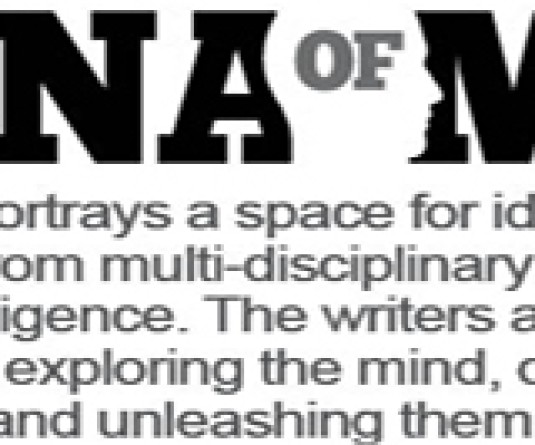
Mhonthung Yanthan
Asst. Professor Department of Political Science St. Joseph’s College, Jakhama
The youth dormitories, under many forms and names, existed in a wide region of the world extending from the Himalayas and the Formosa in the North to the Australia and New Zealand in the South; and from the Eastern Pacific and Marquesas to the west coast of Africa. Thus this social institution is found among diverse races, now classed as distinct, such as Dravidians, Indo-Mongols, Malays, Papuans, Polynesians, Australians and Africans (Dongre 2013: 2). In North-East India men's houses are also found among the Abors, Mikirs, Garos, Lalungs and Lynngams, as well as among most of Kuki and Lushai tribes.
In Nagaland Morung Institution is called differently by different tribes. It is known as ‘Ban’ in Konyaks, Kichuki in Angami, Arju in Ao, Chumpo in Lotha, Apuki in Sema, Renshe in Rengma, Chethiche in Chakhesang, Haku in Chang, Pang in Phom, Awikhuh in Pochury, Khiangyam in Yimchungru, Pon in Khiamniungan, Herangki in Zeliang and Singtang in Sangtam (Nshoga 2009:78). The Morung or the bachelor dormitory system was an essential part of Naga life. Apart from the family, it was the most important educational set up of the people.
The prime education centre in Naga society was the morung (bachelors’ dormitory). The morung was an important educational institution for both the boys and girls. Much of Naga cultures, its customs and tradition have been transmitted from generation to generation through folk music and dance, folk tales and oral traditions, carvings of figures on stones and wood, and designs on clothes. It was also used as a guard-house during times of war.
The Morung was the institution where the dignity of labour is taught, refine culture, rectified the personal shortcomings, and together they build strong society. It is observed that the morung acted as the guardian, a father, a police and the court of the boys. This institution is considered as the mother of art and culture. On account of this importance Anand observes, “The morung plays vital role in preparing younger generations in the village council. The morung is the club, the public school, the military training centre, the hostel for boys and meeting place for village elders. It is as well the centre for social, religious and political activities.”
Like the boys’ dormitory, girls’ dormitory was also prevalent in most of the Naga villages, where the girls would stay in the dormitory after attaining puberty till they chose their life partners and settle in family life. During her stay in morung she would learn spinning, weaving, embroidery works, stitching, sieving, cooking, rice-brewing etc., from her senior friends. Besides, she would also come to know folklore and dances from senior girls. Apart from this learning, she would get lessons about good behavior, manner, character, morality and ethical code of conduct.
Relevance of Morung System
Morung system was a set of learning; it was also the very foundation to modern education. The relevance of Morung culture in the present Naga society can be understood on the following arena:-
1. Naga Democracy: Naga traditional political institution (Democracy) has attracted many scholars. A.Z. Phizo, the erstwhile President of the Naga National Council (NNC), has argued that: “There is no political party in Nagaland. We don’t need it. All things considered, he continued, Nagaland need not intimate or adopt foreign institutions [modern democracy] in matter of political organisation.” In Phizo’s view, Nagaland was already fully democratic by traditional design, “[it’s the] very spirit of our country” as he put it, hence they would not require political parties and elections to “become” democratic.
2. Military Training: Morung was the military training centre for young boys. The art of warfare and the spirit of patriotism were taught. The same can be adopted in modern schools and colleges.
3. Value Education: In Morung, values like dignity of labour, honesty, sincerity, discipline, respect for elders, morality etc., were imparted. Morung value seems to be more practical than present Naga Christian faith and values.
4. Skilled Based Education: In Morung skills like handicraft, woodcarving, spinning, weaving, embroidery works, stitching, sieving, cooking, rice-brewing etc., were taught. Our modern education system needs to adopt and institutionalise these skills to reduce the problem of unemployment in Nagaland.
5. Naga Traditional Knowledge of Medicinal Plants: Elders in the village also tells the morung boys of various medicinal plants sitting near fire place. Every Naga tribes have traditional knowledge of medicinal plants. The younger generation need to document this traditional knowledge.
6. Dignity of Labour: The Nagas were best known for their hard work, sincerity and honesty. Morung institution has taught the virtue of dignity of labour. In the past, ‘those who refuse to work shall not be allowed to eat’. However, dignity of labour seems to elude the younger Naga generation. As a result there is a huge problem of educated unemployed youth in Nagaland.
Conclusion
Morung was in fact the life line of every Naga village. It is equivalent of the modern educational institution. For the Nagas, morung was more than an educational institution, it was a social institution. It was in the morung that Nagas not only learnt the cultures, values, norms and warfare tactics of their village but it has also provided the structure for the working principles of the village council. In short, “It is the fulcrum of the village democracies”. With all this advantages, there is an urgent need to reviving the rich heritage of morung system in Nagaland.






